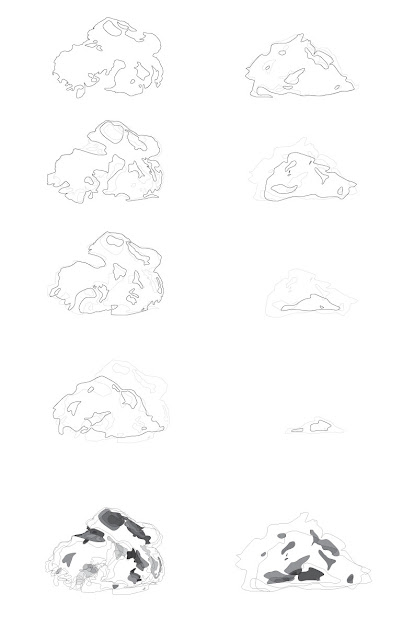The natural process that we pursued is the formation of a brinicle, a phenomenon that occurs when condensed salt brine solution, trapped within glacial ice, escapes when the glacier cracks. The subzero temperature of the salt brine sinks through the open ocean and freezes the surrounding water - resulting in tubular structure stretching slowing toward the bottom. This occurs due to a temperature difference between liquids with different densities, which is how we proceeded in the creation and experimentation of a model. Wax was melted down to a liquid and poured into cold water, and the temperature difference in combination with the materiality created a series of complexities during the instantaneous phase change.
Above: This is our attempt at making a large model, measuring close to two feet. Several layers of wax were added to increasing amounts of water to build it taller.
Below: A detail image of the intricacy that we were able to produce at a large scale, located in the middle layer of the model.








The photographs are really beautiful and the intricacy of the result really great. I´m curious what happens if you introduce a third ingredient into the mix...say lead. First wax into water, then lead on wax. This is just an idea as of how varying density will create different behavior. If you think of a building, it also consists of a massive composite of materials, all behaving according to their role in the design. Think Steel structure, brick infill, glass panes. In the case of autonomous tectonics the separation is not so strict, aspects of translucency (wax) continuously transform into aspects of structure (lead)just as one example.....In the next step, you should start thinking about this transformations of various materials within your research direction...think columns, and their respective equivalent in your technique.
AntwortenLöschenbest,
Matias